THE PYTHON OF MESSINA IS NOT A SERPENT...

Photo Source: Antonino Rampulla
The
pitone (or
pidone, for purists who would not have allowed themselves to be corrupted by the barbaric vulgarity of the people) is a delicacy that every worthy Messina rotisserie proposes among their dishes.
Unlike the arancino/a which can be tasted in every corner of Sicily (in any case, in different versions and endings),
del pitone can be enjoyed almost exclusively near in Messina.
It is, sic et simpliciter, a fried "calzone" with unleavened dough (or rather, without the addition of exogenous yeasts).

The most widespread version on the origin of the name refers to the italianization of the dialectal term
piduni, in italian "piedone", since its shape would simply resemble a big foot.
However, the most fascinating and probably correct interpretative key to the origin of the term python has its roots in Greek Sicily. It would concern the ancient custom of offering the Apollonian priestesses the
pizie or
pitie (from pythía), spelled and laurel buns, so that they
pro-pitiated favorable future events. Probably this tradition originated not only the Greek
pita, but also the Albanian pite, the Turkish
pide, the Romagna
piadina (probably of Byzantine heritage) and the Calabrian
pitta, all preparations having to do with bread and focaccia. Also curious is the term by which the Jews call the loaves of bread:
pat (in full,
pat lechem).
In relation to such etymological hypothesis,
the more correct term is probably pitone with respect to pidone, as it is closer to the Greek root
pyth-.
For further information, please refer to the reading of
The historical origins of the pidone (or python) Messina style .
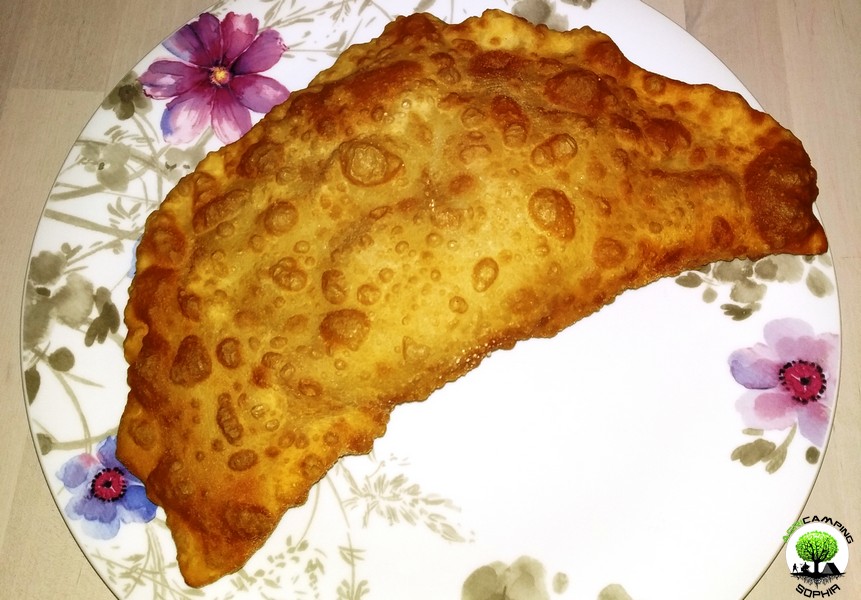
There is no disciplinary, therefore no official recipe or procedure for the preparation of pythons. Since we start from an unleavened dough, almost all the recipes available on the net include the addition of lard or margarine to soften it. The preparation, due to the elimination of rising times, would theoretically be very quick. However, if you proceed with an "improper"
autolysis for at least six hours and at least a cycle of creases, with olive oil, a couple of hours before the cut, it is possible to give up without any problem to lard or margarine.
Traditionally seasoned with the same ingredients used for focaccia, that is tomato, tuma, escarole (endive) and anchovies in oil, in Messina rotisseries, however, the traditional python is often also offered without tomato.

The version we propose is the result of experiments and exchanges of information with Dr. Corrado Rampulla and Giovanni Faraone (owner of the
Piccola Bottega Delle Golosità and
Sicilian Savours )
THE DOUGH
To obtain 6, we knead 300 grams of 00 soft wheat flour (a Sicilian Maiorca is fine, even if it is less sifted), 300 grams of re-milled semolina (for example, a Sicilian Russello) , with 200 grams of mineral water, 100 grams of rosé wine (a
Apollonia , for example) or a sparkling white (also a brut or a prosecco), 15 grams of sugar, 10 grams of salt and 10 grams of extra virgin olive oil. Let the dough "rest" for at least six interspersed hours, after four hours of a cycle of folds, adding another 10 grams of olive oil.
THE "SHAPE"
We form blocks of 100 grams, let them rest for an hour and gradually begin to roll them out, flour with semolina, until discs of about 22 cm are obtained (the weight is quite thin).
THE "FARCITURA"
We season the "discs" in half with a few chopped anchovies in oil, a little tuma (basically an unseasoned pecorino, therefore soft), a little tomato (when possible , cherry or datterino strictly from Pachino) and finally with a bit of escarole (endive). We close by folding the unseasoned half like a calzone. We advise you to oil and lightly salt tomato and escarole before stuffing the python, so as to introduce only the necessary oil and a little salt well distributed, and above all not to overdo it with anchovies (whose flavor could cover the rest of the more delicate ones. flavors).
FRYING
Deep fry, preferably in peanut oil (easily available in supermarkets, which features a smoke point over 220 degrees and an almost neutral flavor ), at a temperature of 180-200 degrees (185-190 degrees if with a deep fryer), browning them firmly!
Text Source: Antonino Rampulla
ARCHIVE NEWS
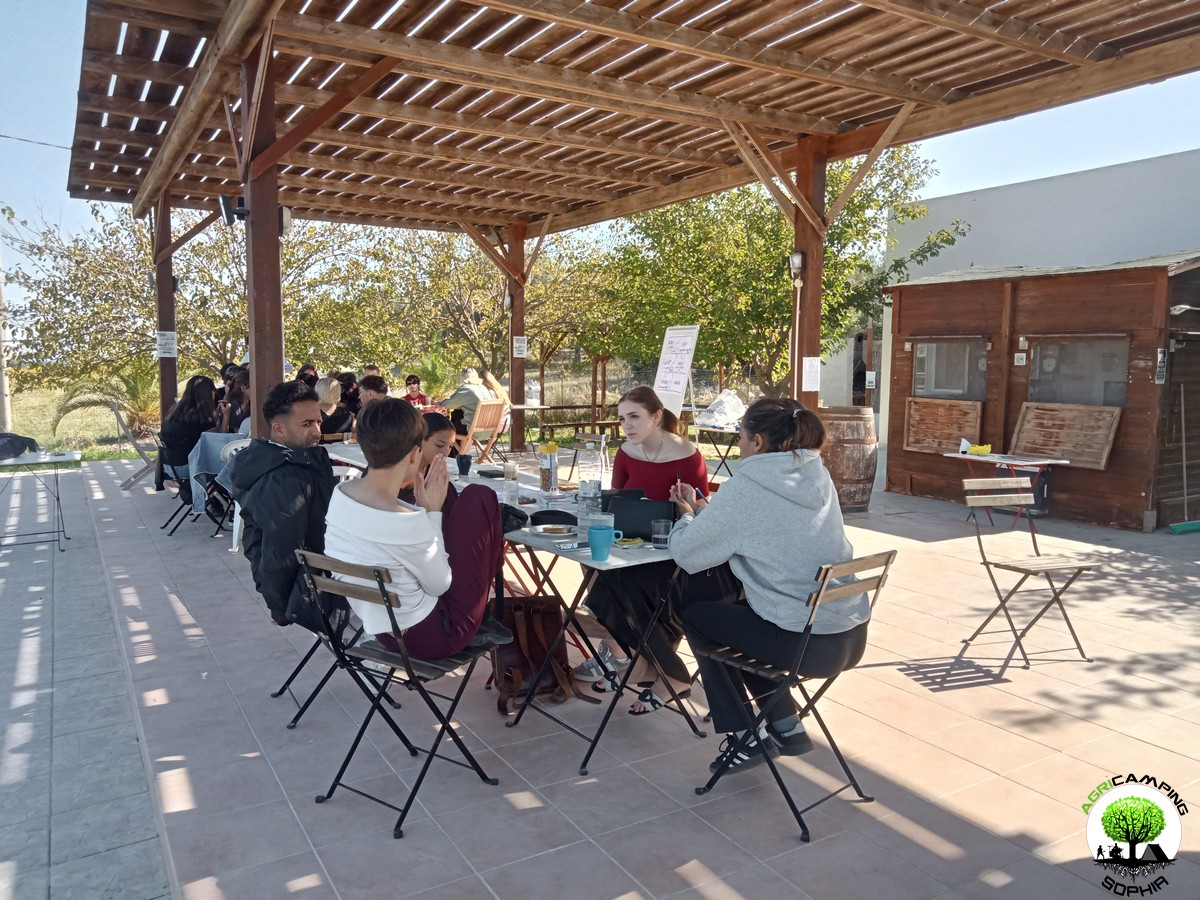 DO YOU WANT TO ORGANIZE AN ERASMUS AT AGRICAMPING SOPHIA?
DO YOU WANT TO ORGANIZE AN ERASMUS AT AGRICAMPING SOPHIA?
WHAT IS AGRICAMPING SOPHIA?
It is a campsite with tent pitches, glamping tents, mobile homes and bungalows
WHERE IS IT?
In Italy, in Sicily, near Syracuse, in Pachino: 36.736883, 15.095610
HOW TO CONTACT US?
info@agricampingsophia.it
(SPEAK ENGLISH) +39 3473079242 – (ONLY SPEAK ITALIAN) +39 3452396095
WHAT DO WE OFFER?
We offer hospitality and catering for Erasmus projects
FOR HOW MANY PEOPLE?
We can have 4-7 single beds in the Socrate Bungalow, 6-10 single beds in the Platone Mobile Homes, 4-6 single beds in the Aristotele Mobile Homes, 4 single beds in the Iblone Mobile Homes, 4 single beds in the single beds in the Empedocle Glamping Tents. In total we therefore have 18 comfortable single places or 31 single places with a fair spirit of adaptation.
IN WHICH PERIOD CAN AGRICAMPING SOPHIA BE AVAILABLE?
The most suitable periods to use our services...
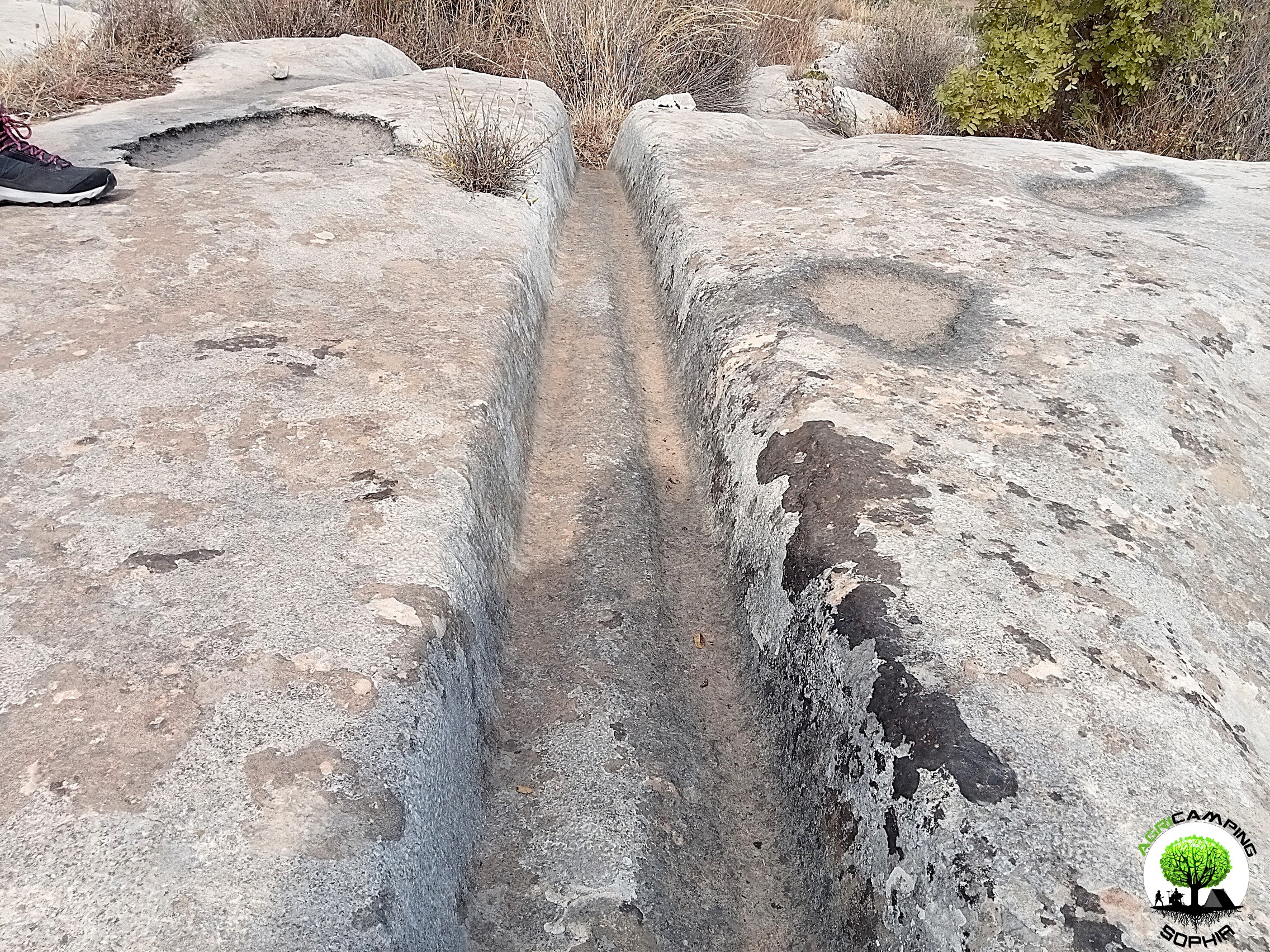 CART RUTS MODELED ON SOFT ROCK?
CART RUTS MODELED ON SOFT ROCK?
Read also RACK OR HOUSING FOR CLOGS?
Some cart ruts from the Targia district, in Syracuse, and most of the cart ruts from Granatari Vecchi, in Rosolini, give the impression of having been impressed, modelled, on a rock that was originally viscous, not entirely solid. As absurd as this hypothesis may seem, especially in Granatari Vecchi, the softness of the shapes and the at least anomalous uniformity of the rock bank, as if it were a concrete casting, which hosts the cart ruts, is unicum compared to the lithic context in the area.
In Targia this phenomenon is less impressive but if we consider the cart ruts essentially cart tracks, therefore furrowed roads indirectly resulting from the repeated passage of carts along the same route, we do not understand why such uniformity and smoothness is present, in the majority of cases, also on the parts not affected by the passage of the...
 RACK OR HOUSING FOR CLOGS?
RACK OR HOUSING FOR CLOGS?
Read also CART RUTS CUT FROM QUARRIES
In the presence of slopes, even slight ones, in some cart ruts in the Targia district, in Syracuse, central holes are found with a diameter of between 30 and 50 centimeters and a depth of 15-20 centimeters, spaced about 50 centimeters apart. Neither the position (they are not exactly in the center of the cart ruts and perfectly aligned with each other), nor the shape appear perfectly regular: either the passage of time and any wear have profoundly modified their original shape or, simply, they have never had a systematic regularity. However, the offset in position between one hole and another is never completely “off-axis”: there is always a portion about twenty centimeters wide that coincides with the same portion of the previous and subsequent hole. The best preserved and most defined holes are found in the cart ruts usually called Scala...
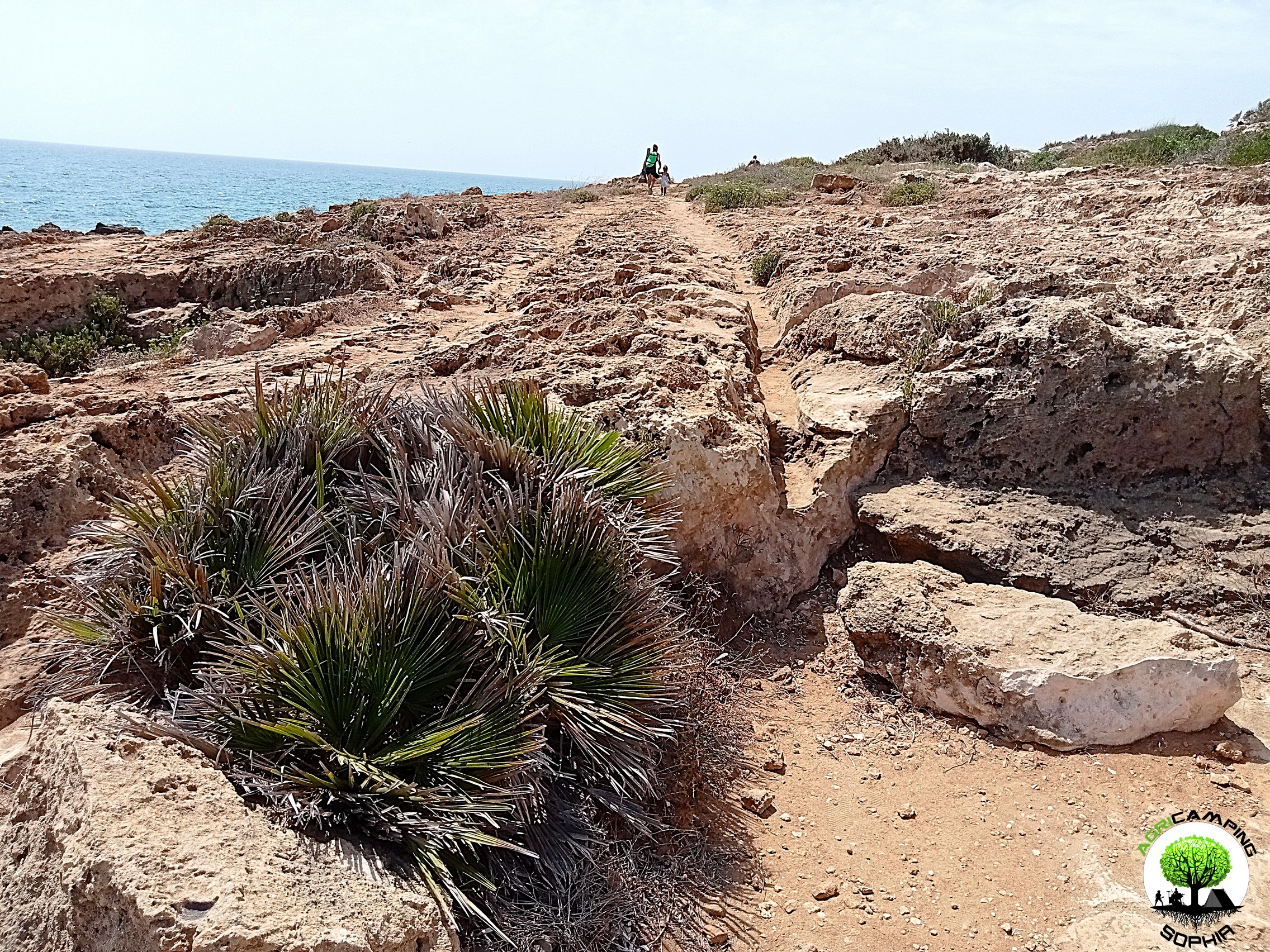 CART RUTS CUT FROM QUARRIES
CART RUTS CUT FROM QUARRIES
Back to CART RUTS AND A FEW TOO MANY PROJECTIONS
I will skip any preamble, referring to what has already been written regarding the presence of cart ruts in south-eastern Sicily.
The easy academic tendency has been, in most cases concerning cart ruts, to consider them in terms of the latomie, or quarries, with which very often (for example in the cases of the Targia or Pizzuta districts) they share the same territory.
According to this theory, the carraie would have been indirectly created due to the wear of the rock at each passage of carts or sleds loaded with extracted stone blocks. I will not repeat the arguments presented so far in order to demonstrate that this is a theory that has little solid foundations on an in-depth analysis of the cart ruts. However, I will add a piece by demonstrating the implausibility of a connection between them in both chronological and functional...
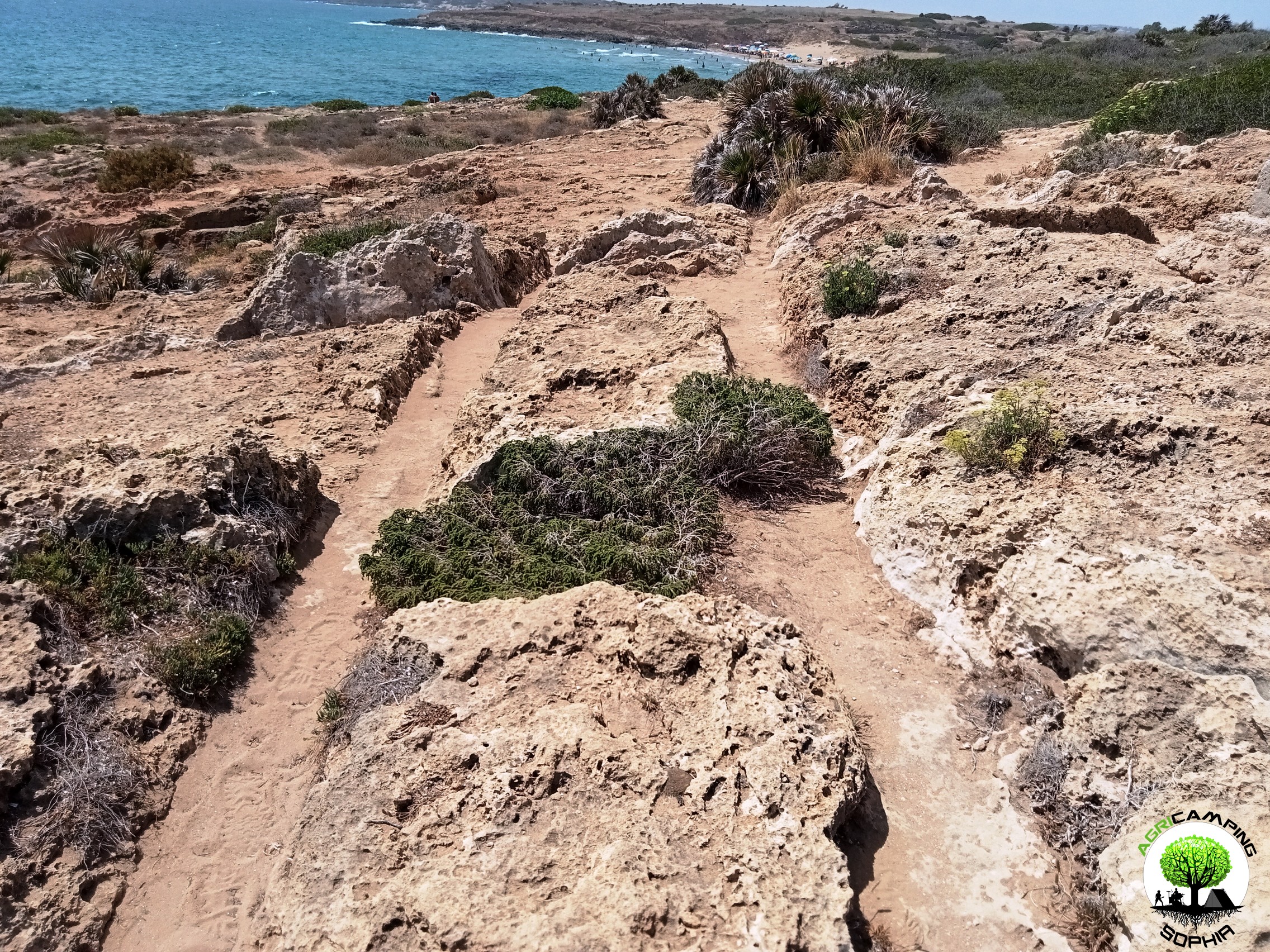 CART RUTS AND A FEW TOO MANY PROJECTIONS
CART RUTS AND A FEW TOO MANY PROJECTIONS
Read also THE POLISHING OF THE CART RUTS
I will skip any preamble, referring to to what has already been written regarding the presence of cart ruts in south-eastern Sicily.Considering the possibility that the cart ruts were gradually dug by the passage of carts pulled by pack animals, for example pairs of oxen, observing certain sections of the cart ruts present in the Granatari Vecchi district, in Rosolini, and in the Pizzuta district, close to the Vendicari Reserve, two questions arise:
1. Why force the animals to pass over rough surfaces and protrusions high, compared to the base of the furrows, even 60-70 centimeters?
2. Why, in the presence of such obstacles, not opt for a detour?
For Mottershead, Pearson and Schaefer such protrusions appeared later, since at the time of the passage of the wagons, a layer of earth covered the rocky bank, thus not making the obstacle...
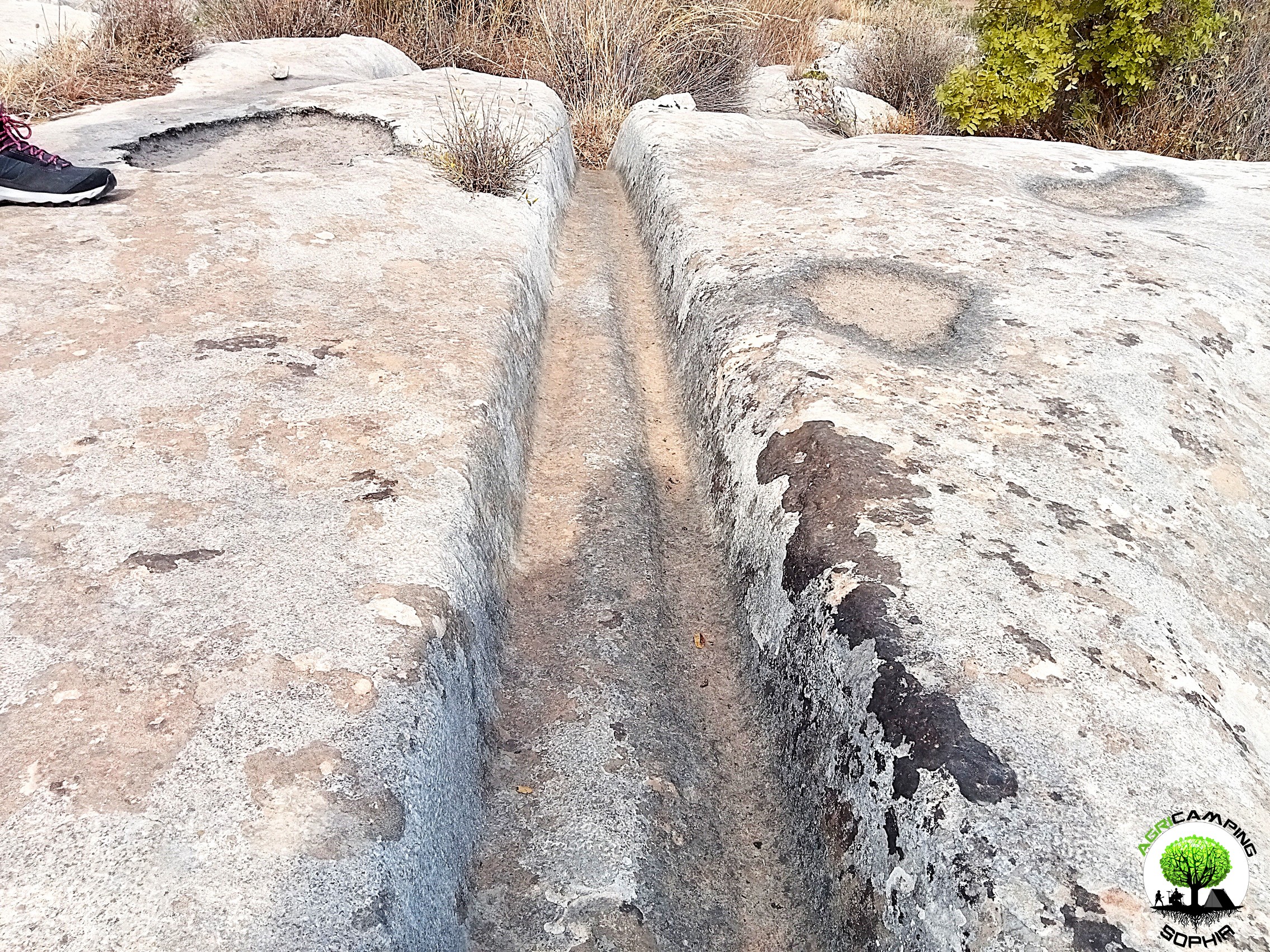 THE POLISHING OF THE CART RUTS
THE POLISHING OF THE CART RUTS
Read also THE PROBLEMATIC EDGES OF THE CART RUTS
I will skip any preamble, referring to to what has already been written regarding the presence of cart ruts in south-eastern Sicily.
To proceed with this comparison I have chosen a probable capital and the corner of a recess present in a block of the northern walls of Eloro that would seem to resemble a pinax, that is, a niche that would have housed a fresco of the heroa, but which a more careful observation refers to a system functional to the grip of the block through a pincer winch. Both elements, like the curt ruts, have remained at the mercy of the elements for millennia, and are therefore subject to comparable wear and tear due to the passage of time. The finishing of the capital should be of a high standard, since it is an architectural element that also has an aesthetic function. The recess, on the other hand, should have...
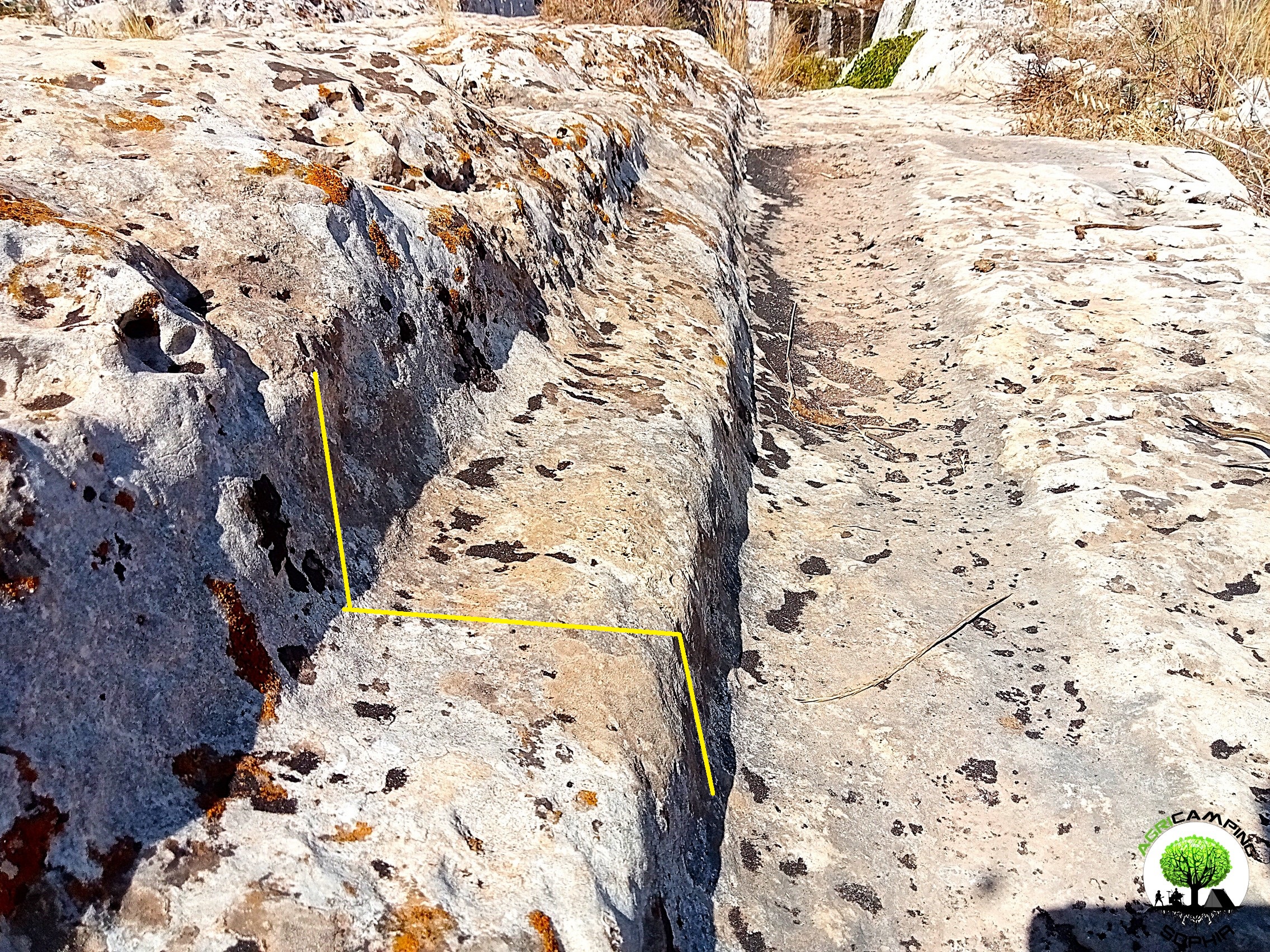 THE PROBLEMATIC EDGES OF THE CART RUTS
THE PROBLEMATIC EDGES OF THE CART RUTS
I will skip any preamble, referring to to what has already been written regarding the presence of cart ruts in south-eastern Sicily.As can be seen in other sites around the world, in some cart ruts I visited, in particular in the Cugni district in Pachino, in the Granati Vecchi district in Rosolini and in the Targia district in Syracuse, a clear border can be seen, a sort of frame, next to the grooves, more marked externally, barely noticeable internally.
The borders I measured have a width of 14-20 centimeters and a height of 8-10 centimeters.
Not all cart ruts have such frames present or particularly evident, regardless of the degree of wear or degradation. They are found above all in cart ruts with less deep grooves.
As already described in detail, given the presence of furrows with a depth of even 65-70 centimeters, the wheels of a possible vehicle would have had to have a...
 THE PROBLEM OF CART RUTS IN SOUTH-EASTERN SICILY (PART FOUR)
THE PROBLEM OF CART RUTS IN SOUTH-EASTERN SICILY (PART FOUR)
Click here to return to third part
Clapham Junction
As in the Maltese site Misrah Ghar Il-Kbir, also in the Targia and Granatari Vecchi districts the cart ruts intersect and cross each other in a similar way to the track switches in a railway station. The nickname Clapham Junction that was given by David H. Trump to the Maltese site, derives precisely from the similarity with the famous English railway station. For Sagona these are agricultural furrows and water channels, for Mottershead, Pearson and Schaefer these are abandoned paths due to obstacles and wear. Obviously we do not know what the morphology of the Syracuse and Rosolini territory was at times when the cart ruts were traced, but considering the current context, there certainly would have been no agricultural reason to build them, given the presence of fertile land, springs and fresh water courses just a few kilometers...






 DO YOU WANT TO ORGANIZE AN ERASMUS AT AGRICAMPING SOPHIA?
DO YOU WANT TO ORGANIZE AN ERASMUS AT AGRICAMPING SOPHIA? CART RUTS MODELED ON SOFT ROCK?
CART RUTS MODELED ON SOFT ROCK? RACK OR HOUSING FOR CLOGS?
RACK OR HOUSING FOR CLOGS? CART RUTS CUT FROM QUARRIES
CART RUTS CUT FROM QUARRIES CART RUTS AND A FEW TOO MANY PROJECTIONS
CART RUTS AND A FEW TOO MANY PROJECTIONS THE POLISHING OF THE CART RUTS
THE POLISHING OF THE CART RUTS THE PROBLEMATIC EDGES OF THE CART RUTS
THE PROBLEMATIC EDGES OF THE CART RUTS THE PROBLEM OF CART RUTS IN SOUTH-EASTERN SICILY (PART FOUR)
THE PROBLEM OF CART RUTS IN SOUTH-EASTERN SICILY (PART FOUR)